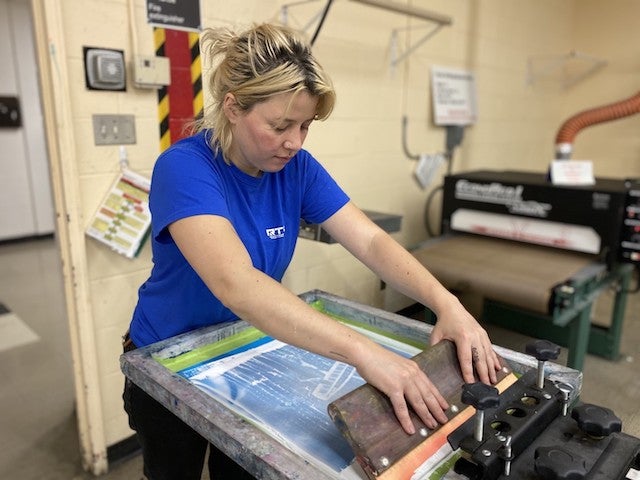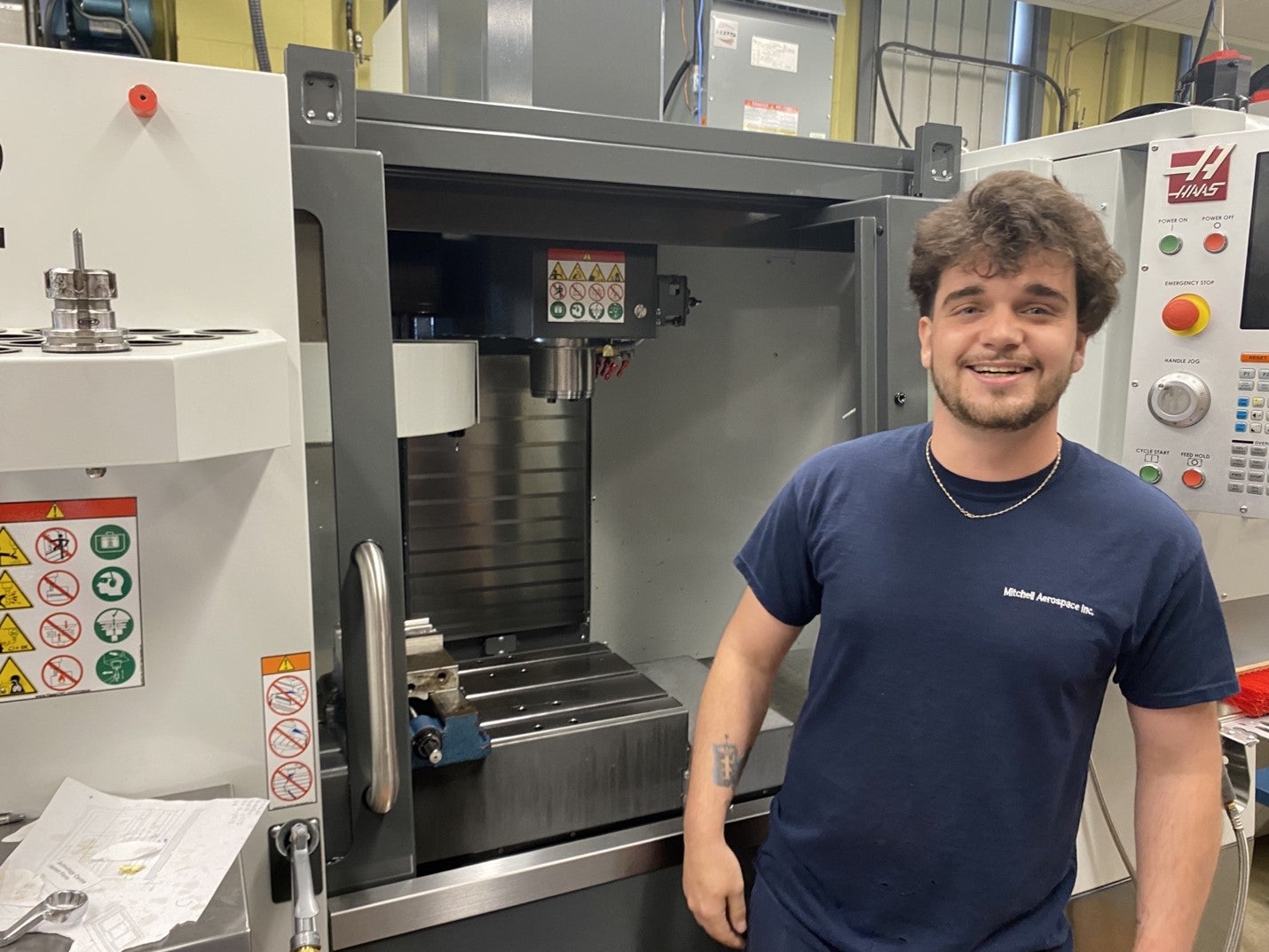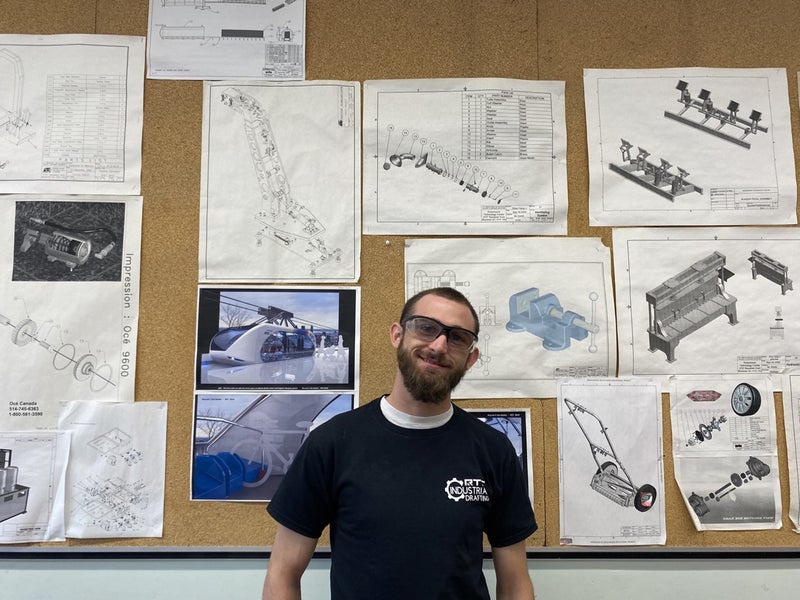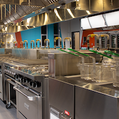Rosemount Technology Centre: What Will YOU Create?

Rosemount Technology Centre (RTC) is a place where creatives go to learn all they need to know to bring their ideas, big or small, to life. Industrial Drafting [Computer Aided Design], Machining Techniques, and Digital Graphics Technology (Printing) are just three of the programs offered at the largest English technical career training centre in Quebec.
Each classroom is equipped with up-to-date technologies and software and resembles more a replica of a design shop or printing plant than the traditional lecture room. The programs are between 12 and 18 months long and include internships that almost always culminate in permanent positions. Many of the RTC programs are related in some way and the teachers, who are professionals in their respective fields, are always open to answering questions from students across the hall.
Industrial Drafting [Computer Aided Design]
Having access to this wealth of experiential knowledge is one of the things Industrial Drafting student Jacob Biro, 26, enjoys most about RTC. “I find it’s one of the most open schools where you can talk to every teacher and you’ll get an answer,” he said.
Industrial Drafting prepares students to create complete blueprints of their design ideas using computerized tools. AutoCAD, Solidworks, and Autodesk Investor are the three main software students learn to use to produce just about anything from sausages to aircraft, according to Industrial Design teacher Pavel Kimovsky.
Mr. Kimovsky says we’re surrounded by human-made things which all began with a drawing. “Our department prepares students to do that job,” he said. “In what field? It doesn’t matter…we can work in anything.” All that is required is vision and a little creativity.
Industrial Drafting student Jacob Biro
For the final project at the end of the program students have the freedom to design whatever they choose. Biro aspires to make wide body kits for cars and says the reason he joined the course was the learn how to model it. With the help and guidance from Mr. Kimovsky, Biro plans to enhance the exterior of his car for his final project.
Taking full advantage of the school’s openness, Biro is also exploring his curiosity about the manufacturing element of his designs. Learning how to operate a computer numerical control (CNC) is a competency taught in Machining Techniques, and Biro says he’s had the benefit of having teachers from that program show him the process.
Machining Techniques
Down the hall, where students are being taught all the basics in manufacturing, the Machining Techniques classroom hums and whirs with the sound of machinery and metal work. It is through machining that design ideas are materialized. Students learn to manually operate all the main manufacturing machines including CNCs, lathes, and drill presses to produce specialized metal parts. Since CNCs can mass-produce a product, it is one of the more popular devices.

26-year-old Zachary Raspin is at the end of the program and describes the work he does as getting a solid and a drawing, writing a program on the computer, then running it on the CNC machine.
“You’re constantly busy and you’re constantly doing something, so you’re not really thinking about [work],” Raspin said. “You’re just thinking about the project that you’re currently working on, and it does make time fly. It’s like blinking.”
Machining is an industry in hot demand right now. Program teachers say they are getting calls from hiring companies almost daily looking for students who are close to graduating and may be looking for a job. The Machining Techniques and Industrial Drafting programs complement the other in many ways and combining the two Diploma of Vocational Studies programs further helps in the job market.
Digital Graphics Technology (Printing)
From computer to paper or just about any other surface – Digital Graphics Technology students learn so much more than just Photoshop, Illustrator, and InDesign. The program is comprised of anything print-related including car wrapping, wall-vinyl, laser-printing, embroidering, and CNC.
“We do tours pretty much on a weekly basis,” Academic Advisor Melissa Urso said. “And most of the time when people leave this program they’re astonished as to how diverse and how many things they teach.” With exposure to all the different printing technologies throughout the program, the student can choose one they like and focus on it.
Digital Graphics Technology is a perfect fit for people seeking an artistic outlet. According to student Roxane Delisle, 34, who is nearing the end of the program, you design everything you print. “You have to be creative,” she said. “[The teachers] push you to make your own design and make your own stuff.”
Once completing the program, getting hired at a printing company is not the only post-graduation path. Investing in personal equipment can also be a lucrative option. “Students can invest in a particular machine…and make it back fast,” Ms. Urso said. “Because people are into customized stuff, like custom shirts, customer laser-cut class and wood.”
Delisle had been dabbling in graphic design for ten years before enrolling in the program, practicing on an old printing press. She’s now considering opening her own print shop where she could showcase and sell her own artistic creations.
Inclusive and Accessible
With free tuition at RTC, school fees are low. Program dependent, registration fees vary between $180 and $270. Combined with the cost of uniforms or tools required in some of the programs (which students keep upon graduation), the total cost for up to 18-months of education never exceeds $400.
While RTC caters to the creative, the administration also accommodates people from all different backgrounds whenever possible. The school’s counselor in re-education works with students who may have had difficulties in high school or elementary and the service dog, Gustave, is on duty full-time.
“We have some students who come to us a lot with some learning difficulties,” Ms. Urso said. “We work with those students. There is a place for them. They always have their strengths.”
For more information on registering, visit www.rosemount-technology.qc.ca.
Listen to this EMSB Radio Report












